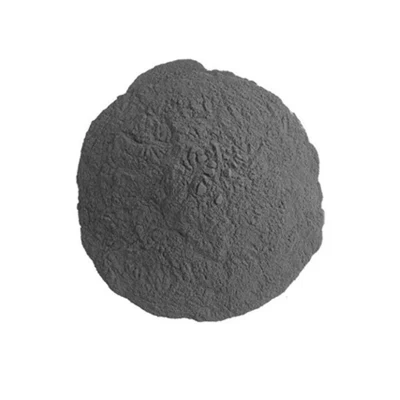Zirconium Powder / Zr Powder
Formula | Zirconium |
Synonyms | Zirconium Powder |
Appearance | Black Powder, Nearly spherical |
Particle Size | −100 mesh, 325 mesh, can be customized upon request |
Melting Point | 1852 °C |
Density | 6.5 g/cm 3 |
Specific Surface Area | 6.7 m2/g |
Bulk Density | 1.24 g/cm3 |
Description of Micro Zirconium Powder
Micro zirconium powder is a fine, grayish-white metallic powder known for its high melting point of around 1,855°C and excellent corrosion resistance. It forms a stable oxide layer when exposed to air, enhancing its oxidation resistance, especially at high temperatures. This powder is widely used in the nuclear industry for fuel rod cladding due to its low neutron absorption and in aerospace for high-temperature components. Its fine particle size also makes it suitable for additive manufacturing, where it is used to produce parts that require high strength and durability.
Princeton Powder is a leading supplier of zirconium Zr powder. We specialize in a comprehensive range of spherical powder products and possess extensive expertise in additive manufacturing (3D printing) industry. Zr powder is for sale at a competitive price.
Chemical Composition
| Zirconium Zr Powder – COA – % metal basis | ||||||||||
| Cl | Fe | Ca | Sn | Hf | Al | Mg | Si | H -75um & 45um size | H – 2um, 5um, 8um, 10um 20um size | Zr |
| <0.02 | <0.2 | <0.02 | <0.3 | <0.5 | <0.05 | <0.1 | <0.08 | <0.3wt% | =0.5 -2wt% – protected | 99% |
Particle Size distribution
0-15μm, 15-53μm, 45-105μm, 45-150μm. (Various particle sizes can be customized)
Applications
- Nuclear Industry: Due to its low neutron absorption cross-section, it is used in nuclear reactors, particularly in cladding for fuel rods.
- Aerospace: Employed in high-temperature components and specialty alloys.
- Additive Manufacturing: Used in 3D printing for producing parts requiring high strength and resistance to heat and corrosion.
- Chemical Processing: Utilized in the production of corrosion-resistant equipment.
Spherical Zirconium (Zr) Powder Reference
- In this study, we examined the effect of potassium perchlorate (KClO4) and magnesium hydroxide (Mg(OH)2) additives on the combustion behavior of a ZrO2 + 2Mg mixture to produce a fine powder of zirconium metal.

